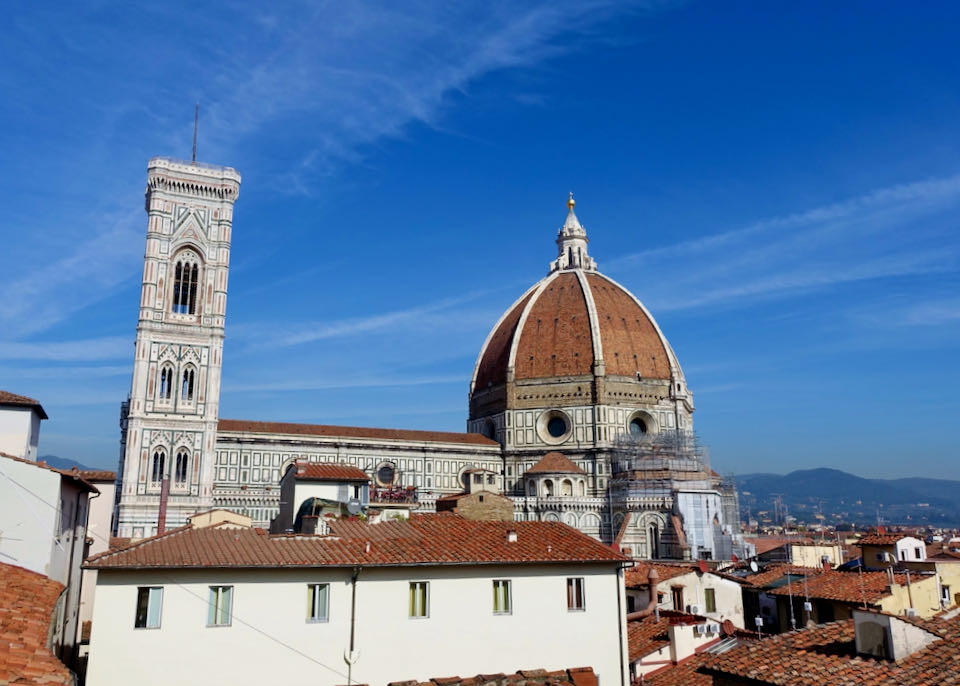
View of the Duomo from Hotel Brunelleschi in Florence.
Steeped in history, tradition, wine, and wonderful rustic cuisine, Italy is Europe’s 3rd most visited country and one of its most enchanting travel destinations. Over sixty-one million tourists visit Italy each year, drawn to its ancient sites and the art-filled churches and museums of Rome, Florence, Venice, and Milan. If art and history aren’t your thing, Italy offers everything from ski resorts to Mediterranean beach towns (like the fantastic Amalfi Coast) to relaxing waterside retreats in the Lakes District. Italy is an excellent family destination, with children warmly welcomed everywhere. And for honeymooners, it’s hard to equal the romance and beauty of Matera.
The 2024 Italy Travel Guide
- Skip to our Italy FAQ
Where to Stay in Italy
- Amalfi Coast – Best Places to Stay
- Amalfi – Best Places to Stay
- Capri – Best Places to Stay
- Florence – Best Places to Stay
- Matera – Best Places to Stay
- Milan – Best Places to Stay
- Naples – Best Places to Stay
- Positano – Best Places to Stay
- Praiano – Best Places to Stay
- Rome – Best Places to Stay
- Sorrento – Best Places to Stay
- Venice – Best Places to Stay
- Vietri sul Mare – Best Places to Stay
Italy Travel Guides
Where to Go in Italy
When to Go to Italy
- Italy – Best Time to Visit
- Rome – Best Time to Visit
- Florence – Best Time to Visit
- Venice – Best Time to Visit
- Milan – Best Time to Visit
- Naples – Best Time to Visit
- Amalfi Coast – Best Time to Visit
- Sicily – Best Time to Visit
- Tuscany – Best Time to Visit
What to Do in Italy
- Milan – Best Tours & Things to Do
- Milan – Best Shopping
- Milan – Best Museums
- Milan – Seeing the Last Supper
Where to Eat & Drink in Italy
The Best Hotels in Italy
- Florence – Best Hotels
- Florence – Family Hotels
- Florence – Boutique Hotels
- Florence – Budget Hotels
- Florence – Romantic Hotels
- Florence – Wheelchair Accessible Hotels
- Florence – Pet-Friendly Hotels
- Florence – Hotels with Private Pools and Jacuzzis
Getting To & Around Italy
- Florence – Airport Transportation
- Florence – Rental Cars
- Florence – Rome to Florence
- Florence – Venice to Florence
- Florence – Pisa to Florence
- Florence – Livorno to Florence
- Florence – Day Trip to San Gimignano
- Florence – Day Trip to Siena
- Milan – Getting Around Milan
- Milan – Milano Centrale Station Guide
- Milan – Airport Transportation Guide
- Milan – Rome to Milan
- Milan – Venice to Milan
Frequently Asked Questions about Italy
Where is Italy?
Italy is a large, boot-shaped peninsula extending off the southern coast of Western Europe into the Adriatic, Ionian, and Tyrrhenian Seas. It shares its northern land borders with the countries of France, Switzerland, Austria, and Slovenia. Italy also has around 450 islands, the largest being Sardinia and Sicily. Italy is the 72nd largest country in the world, with a land area of about 301,340 square kilometers. The western tip of Sicily lies about 146 km across the sea from Tunisia in north Africa. The population of Italy is 60.36 million.
What is Italy famous for?
Renowned for its ancient historical sites (from the Parthenon to Pompeii) and the ultramodern fashion of Milan, Italy is also famous for rich, rustic cuisine (think pizza, pasta, and gelato), award-winning wine, and Renaissance art. Travelers flock to Rome, Florence, and the canals of Venice for old world charm and stunning architecture. The coastal regions of the Cinque Terre and Amalfi Coast are famous for their colorful fishing and resort villages set against dramatic cliffs. The rolling countryside of the Tuscany and Umbria regions draw visitors for vineyard wine-tastings and idyllic agriturismo stays.
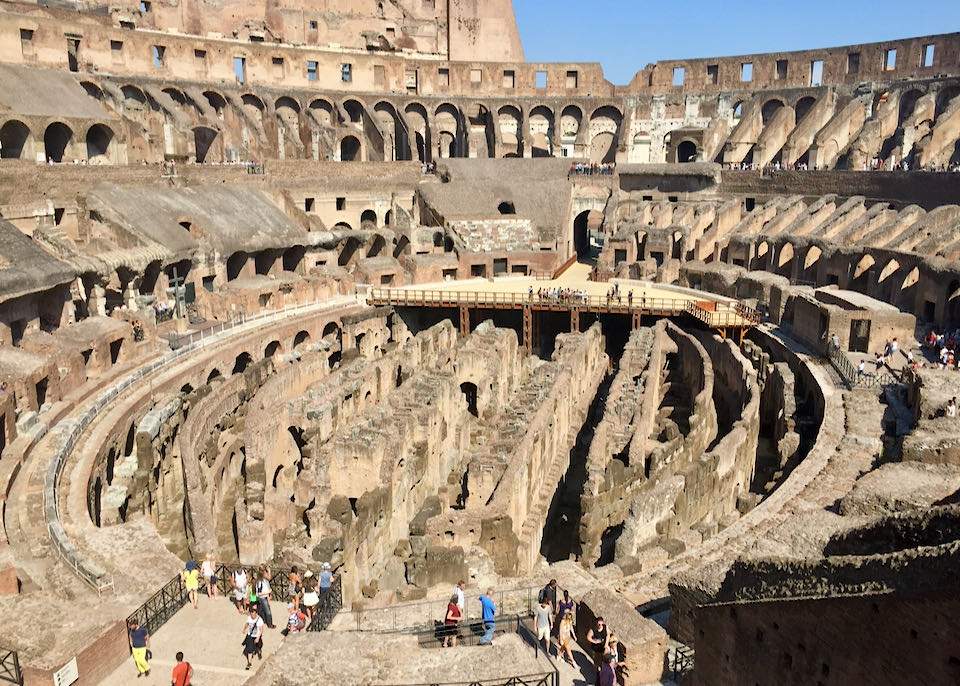
The Colosseum in Rome. One of the many highlights of Italy that surpasses expectations.
When is the best time to travel to Italy?
Italy is wonderful to visit year-round, but the very best time to travel to Italy is in the spring (April and May, except Easter week), or fall (September and October). These periods are when Italy has some of its most pleasant weather, and crowds and prices aren’t at their peak. Summer in Italy can be hot, crowded, and expensive. Italian cities sometimes see thinner crowds in August, but the heat can be searing, and many family-run businesses are shut down as their owners take vacation. Winter in northern Italy is often often cold, wet, and gray, but areas south of Rome are more temperate.
Shoppers will find bargains in midwinter and late summer, during the twice-yearly sales seasons. Winter sales begin shortly after New Year and continue until around mid-February, summer sales take place in July and August. Fashion Week takes place four times yearly in Milan, bringing supermodels, industry big-wigs, and large crowds. Italian wine country is best to visit either in the spring, when it’s at its most scenic, or in the fall during harvest season – though winter visits ensure more time to meet with winemakers, who are less busy during this time.
A vineyard in San Gimignano. The best times to visit Italian wine country are in the spring and early fall.
The most popular tourist sites in Italy, like the ancient city of Pompeii, can be best to visit during the late fall and winter months, when you’ll miss most of the crowd-toting tour buses. For the best possibility of good weather during this time, plan your trip for November and April. Agriturismi – working Italian farms with guest accommodations that can range from basic to lavish, are open throughout the year, but are best to stay in during the spring and fall, when you’ll avoid the high heat of midsummer.
Where are the best places to go in Italy?
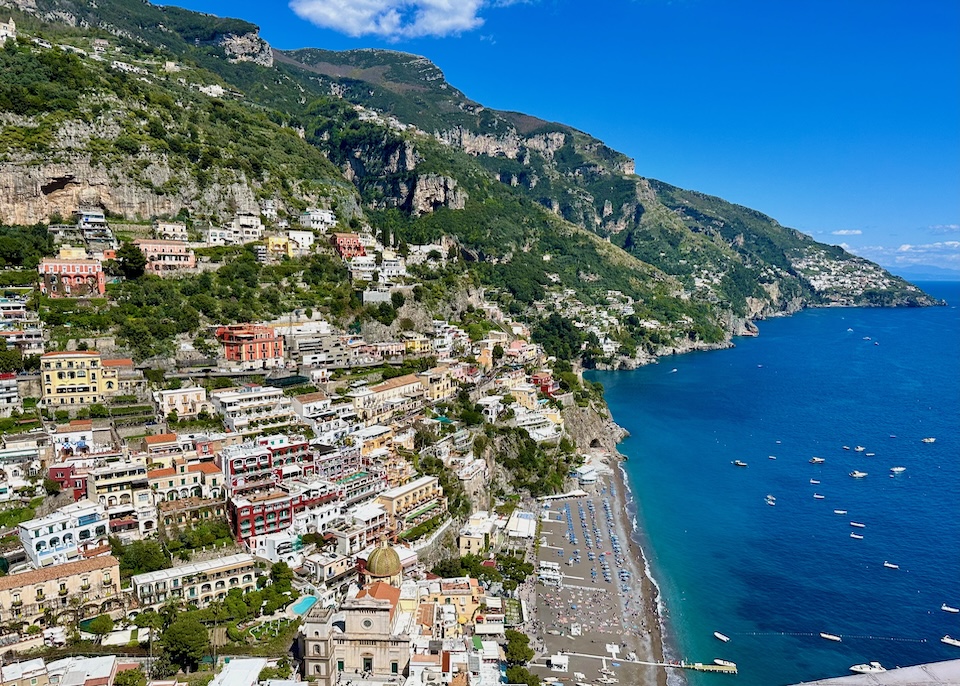
Positano and the Amalfi Coast are a can’t-miss highlight of Italy. This is the main beach and the iconic domed church as seen from Hotel Villa Franca.
The best places to visit in Italy include large, old-world cities like Rome, Milan, Venice, and Florence, as well as charming smaller towns like Mantua and Assisi. The best places in Italy for a relaxing vacation include beautiful resort-laden Lake Como, Cortina d’Ampezzo ski resort in the Dolomites, and the breathtaking Amalfi Coast.
San Vito lo Capo beach in northwest Sicily.
Lovely beaches dot the Italian coastline in the east, on the west, and across the islands of Sicily and Sardinia, making it easy to combine a sightseeing tour with some relaxing time spent on the sand.
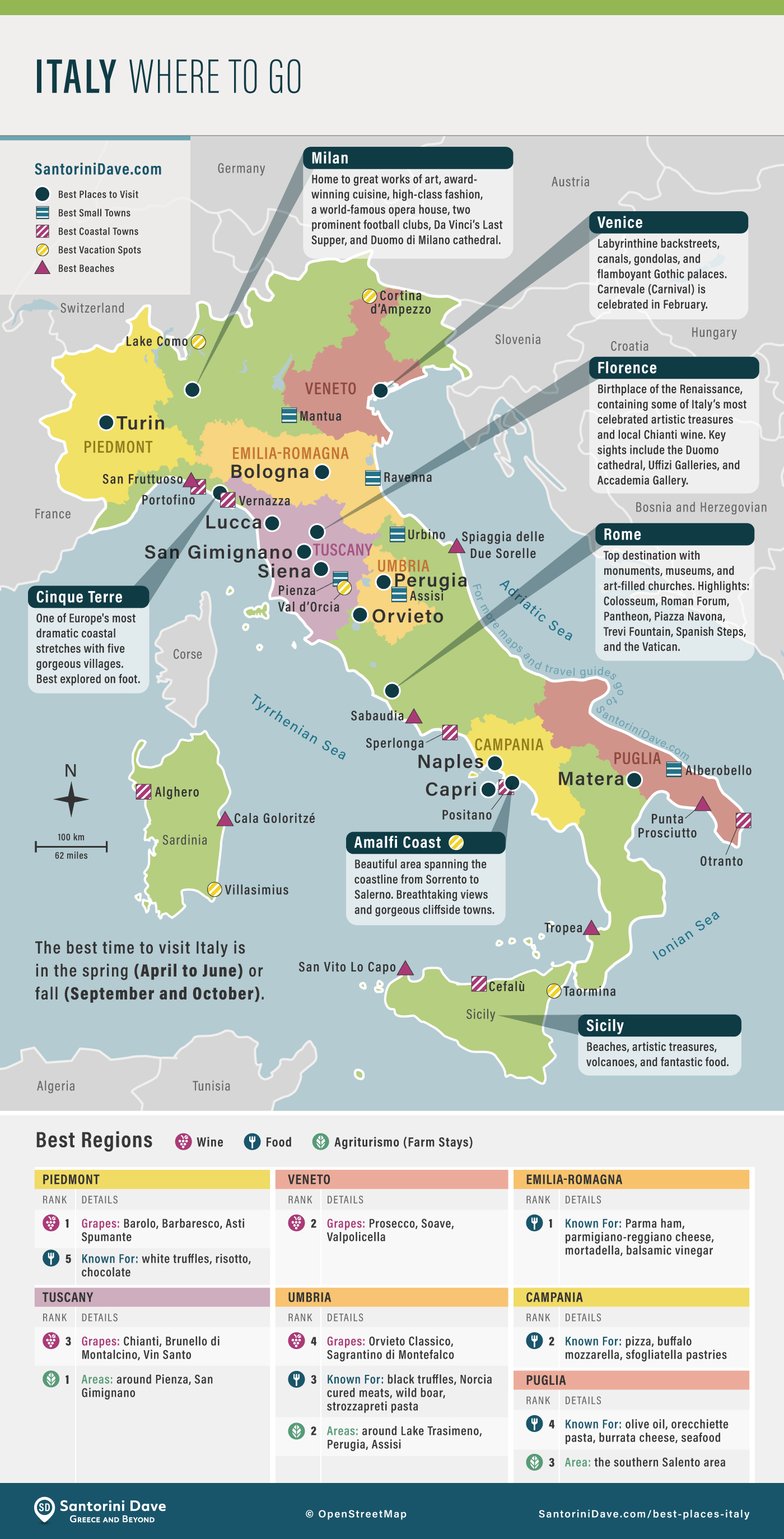
Although most of the must-see sightseeing and best wine regions are found in the north of Italy, southern Italy offers truly distinctive experiences that are well-worth a visit. Among the most unique places to visit in Italy are the the conical stone village of Alberobello in the Puglia region, and the cave-dwelling town of Matera in nearby Basilicata.
The limestone Trulli dwellings of Alberobello.
What currency is used in Italy?
As part of the European Union, Italy uses the euro (€). Most major shops and restaurants across Italy, especially in larger cities, accept credit cards, sometimes with a minimum purchase required. ATMs are plentiful in large Italian cities, and generally easy to find in most smaller towns, and it is a good idea to have some cash on hand for small purchases, bottled water, and snacks.
Tipping in Italian restaurants is not expected, but is increasingly appreciated as a thanks for good service; generally €1 per diner or a simple rounding up of the bill to the nearest €5 mark. Tipping a taxi driver in Italy is only expected for exceptional service, or if they’ve helped with luggage or directions; one to a few euros is appreciated. Housekeeping in full-service Italian hotels should be tipped €1 per day. Tipping in Italy is always done in cash, even when a bill is paid via credit card.
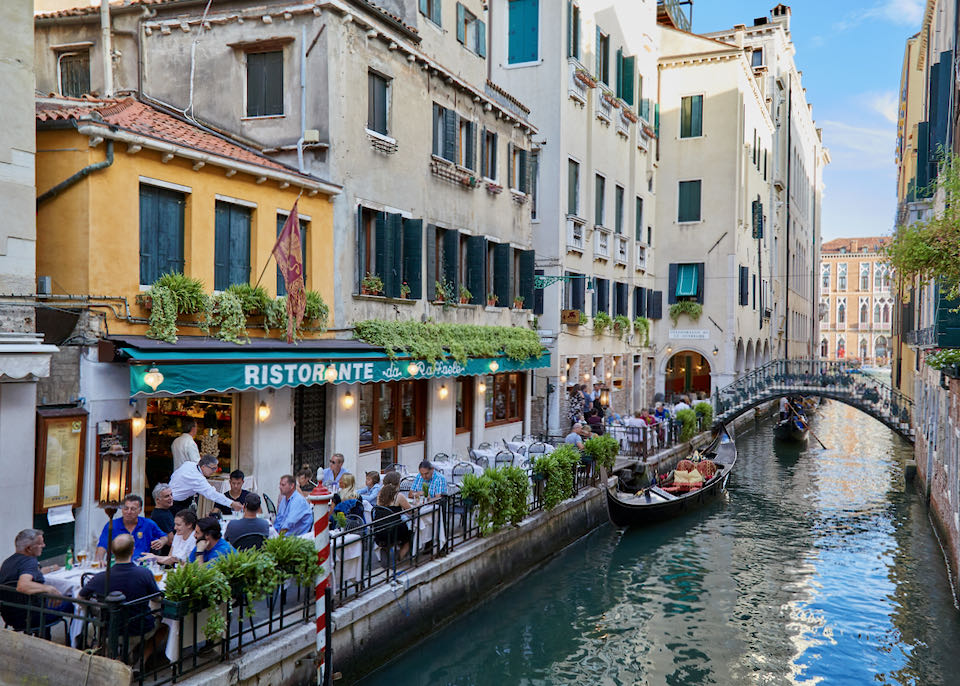
Restaurants line the canals of the Santa Croce neighborhood in Venice.
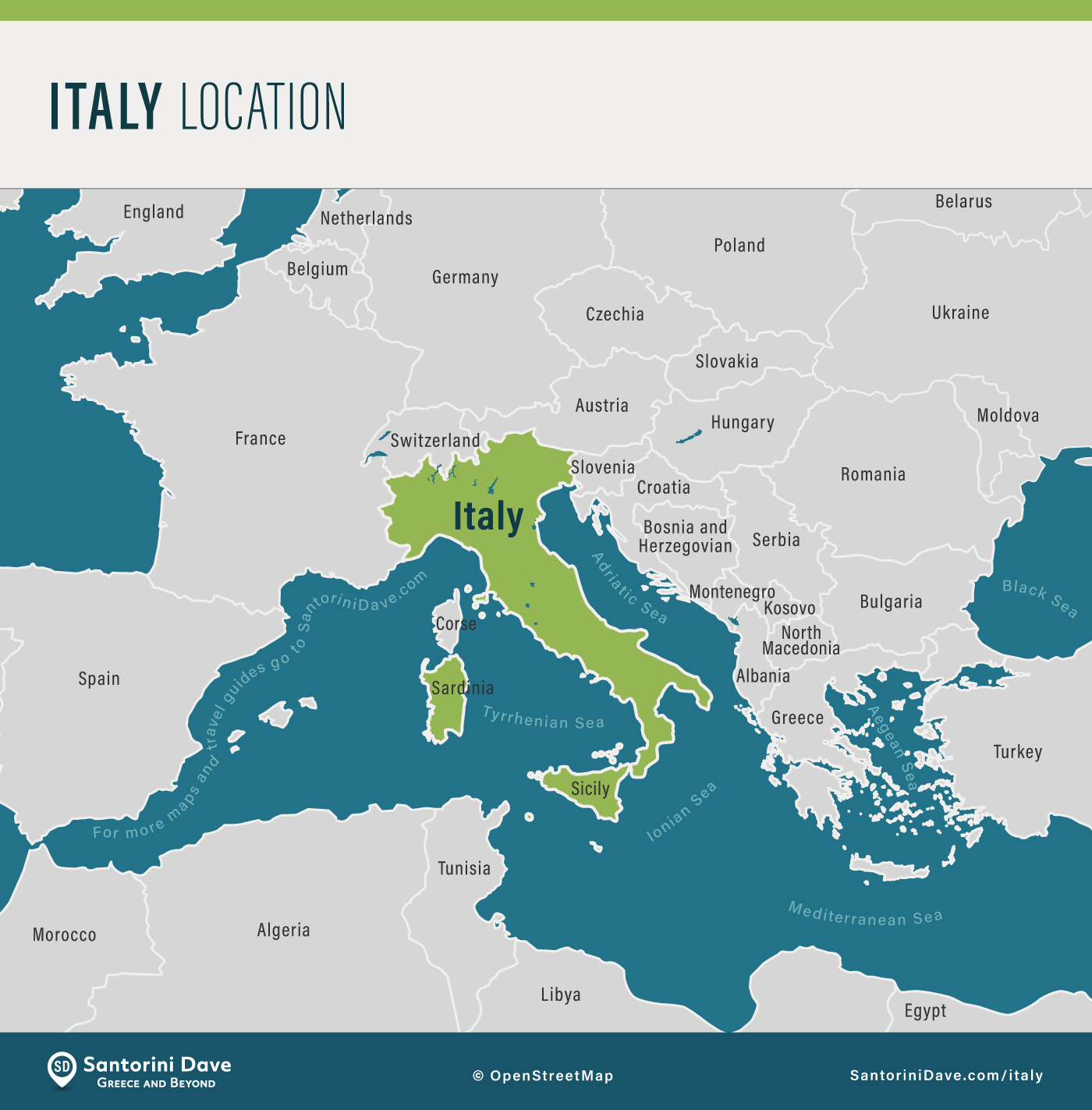
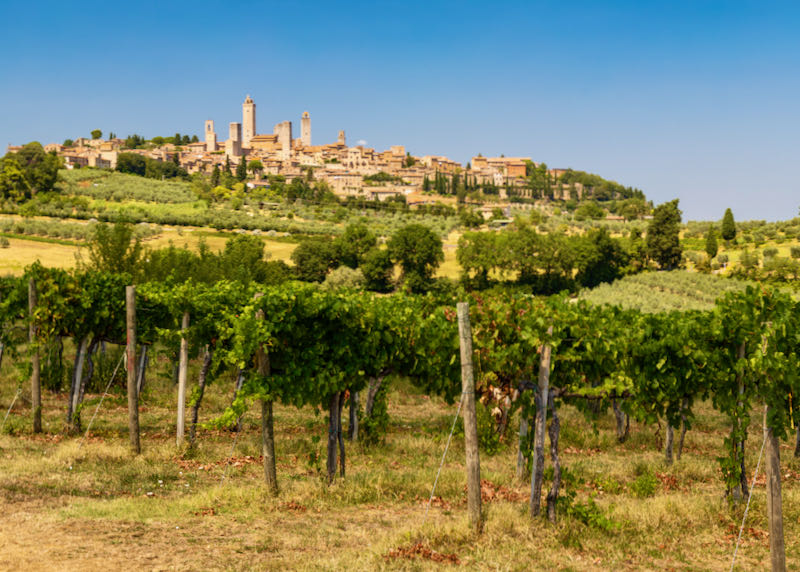
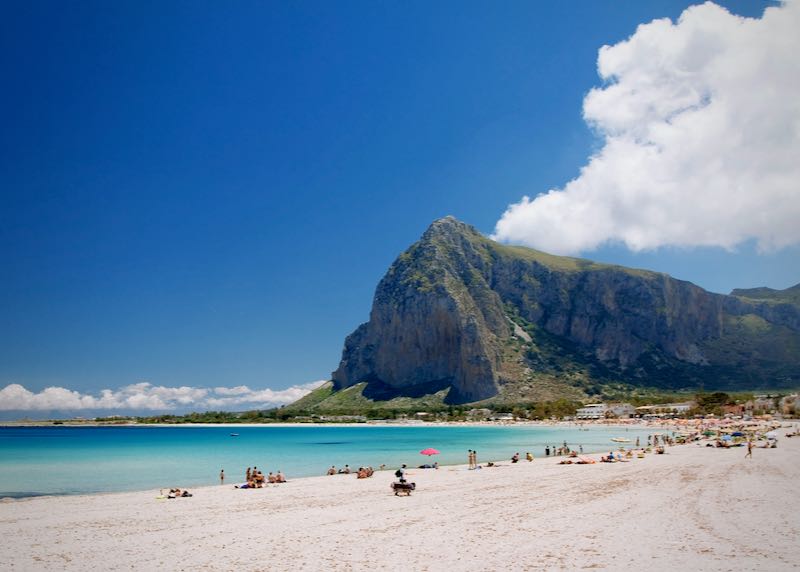
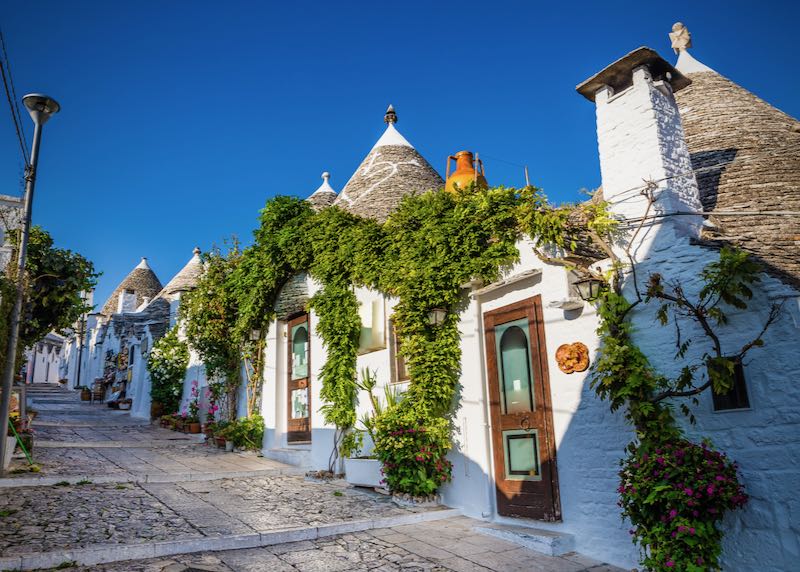
About Santorini Dave